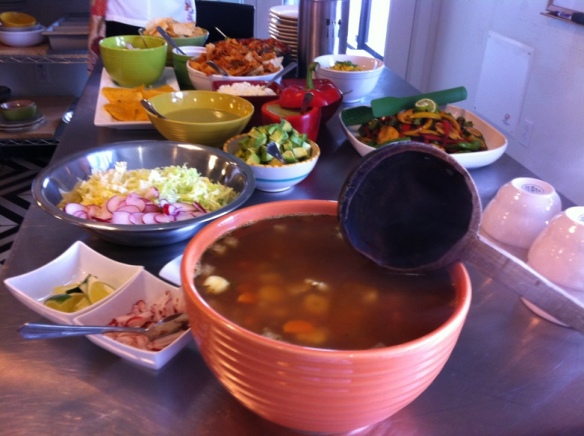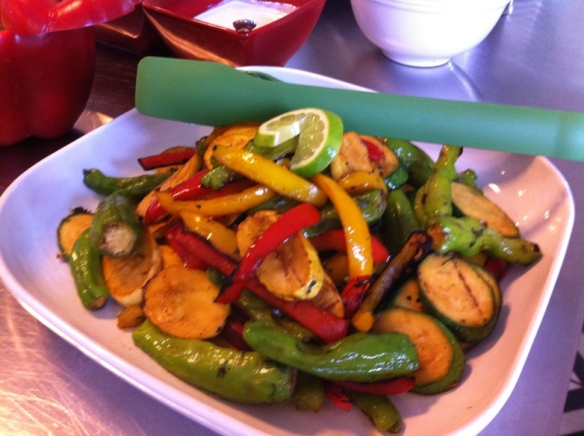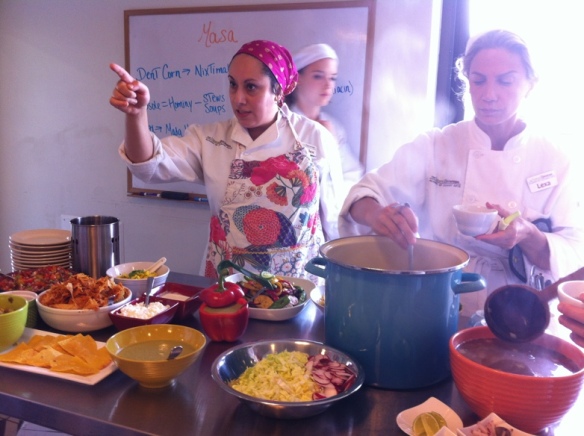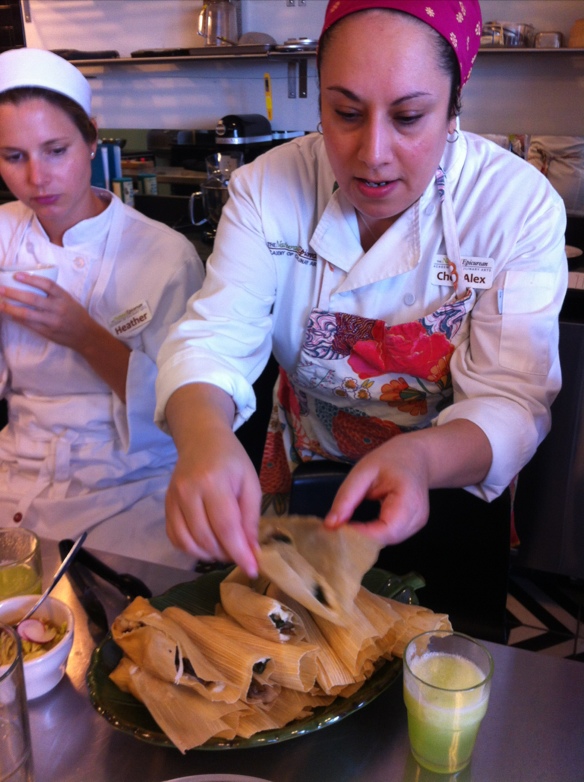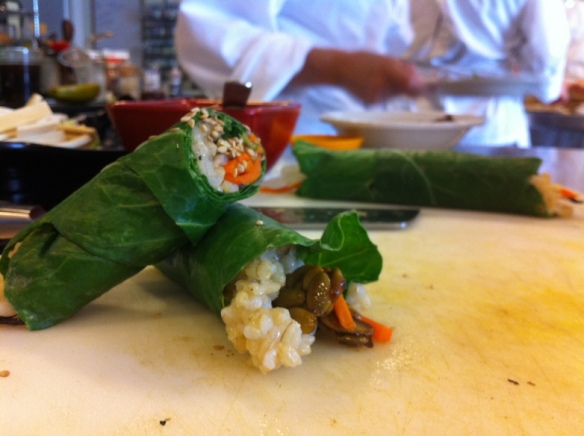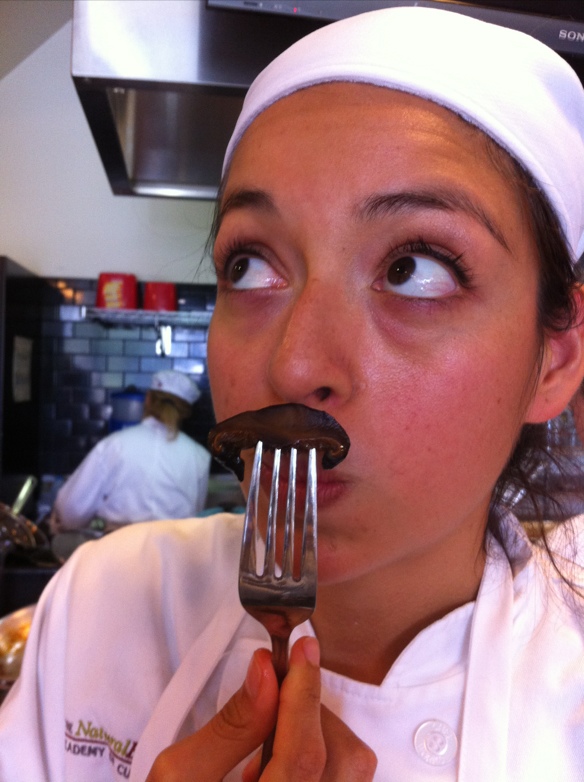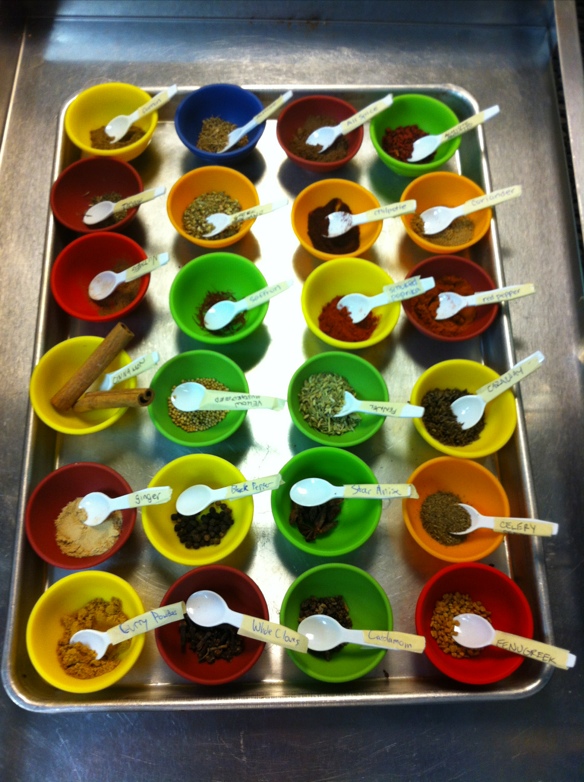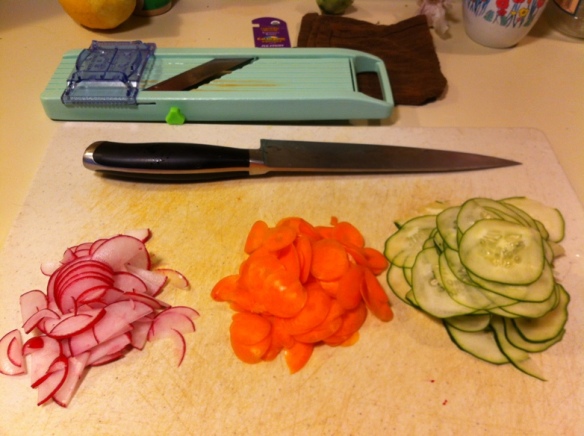Last weekend I cooked for 17 people participating in a small retreat at a person’s home here in Austin. What a great experience! Check out my other website – Austin Healthy Chef – to see more photos!
Monthly Archives: June 2012
Good Seed Veggie Burgers
Being a 99% plant-based eater, when I crave a burger, my first thought is to find a good veggie burger. Some of the best burgers I’ve had were veggie burgers, in fact. I have generally found meat-based burgers to not only be nutritionally inferior, but bland as heck. And sadly, the top national brands of veggie burgers are generally highly processed and often contain gluten or isolated soy protein.
Enter Good Seed burgers. Good Seed is an Austin company with a superfoods focus. What are superfoods, you ask? Well, superfoods are natural foods with greater than normal nutritive properties. Examples are chia seeds, sea vegetables, beets, and hemp seeds. Superfoods are packed with protein, vitamins, minerals, and various phytochemicals. Note – there are no meats considered to be a superfood.
The creator of Good Seed burgers studied at The Natural Epicurean Academy of Culinary Arts years ago, so there’s a connection with my culinary school, which is cool.
Just kind my grandmother used to do, I like to use regular sandwich bread on my burgers (gluten free Udi’s or Rudi’s are my usual favorites). And just like my grandmother, I cut my burgers on the diagonal because presenting triangles is culinary alchemy – take an ordinary square and cut it into two triangles, and all of a sudden you’ve made something better than what you started with. Try it.
Below: Vegan mayo, thick juicy tomato, crisp toasted gluten free bread, avocado, and a Good Seed burger. Ahhh. And triangles, don’t forget the triangles.
Related articles
- Gluten Free Baking Lab (dietiscorrect.wordpress.com)
Masa Class
Being located in Central Texas, we couldn’t get away without a class on masa, a classic Mexican blend of cornmeal, water, and usually some kind of fat. Masa has a number of applications: tortillas, sopes, and tamales are popular ones. I just love the flavor of corn and it’s a great grain to use in the summertime. It’s sweet, light, and fresh tasting. No wonder it has been popular in Latin America for thousands of years (1).
Below: Spicy chilaquiles – a traditional Mexican dish of tortillas, tomato-based sauce, and spices.
Below: One of my favorites, a posole soup (at bottom). Posole is made from a large whole variety of corn and is usually cooked with a meat-based broth. We, of course, used onion, cumin, oregano, cilantro, lime and others to create a deliciously savory soup to go along with the starchy, yummy posole.
Below: Some lovely grilled vegetables – zucchini, yellow squash, and a variety of peppers (including the very trendy shishito peppers – the long green whole peppers).
Below: Chef Alex Lopez, always in command.
Below: We made tamales with a sauteed mushroom filling.
Below: Delicious posole soup with a melon-mint agua fresca.
(1) http://www.campsilos.org/mod3/students/c_history.shtml
Related articles
- Fun Food Facts: Posole is made of People! (lazysmurf.wordpress.com)
- Cooking Par-Tay: Tamales and Fruit Compote (dietiscorrect.wordpress.com)
Heart Hospital of Austin
We got a fun project to take on in our recipe development class – we are partnering with the Heart Hospital of Austin to beef up (or should I say “tofu up”?) their vegetarian menu for hospital patients. This is a great project for us because we all believe in the healthfulness of a plant-based diet, so naturally a hospital should have an excellent array of plant-based choices for the recovering people being cared for.
My team is going to take on creating some new lunch menu items. We need to be mindful of nutritional considerations such as sodium and fat levels, as well as logistical considerations such as not creating menu items with too many new ingredients for the hospital to keep in stock. And of course our items need to be appealing to people who are sick and who might not have as much experience with vegetarian food as we do. And keeping the recipes simple will be useful for the hospital kitchen, as well. Our ideas will be reviewed by an executive at the hospital and I’m hoping that some of our items will end up going on their final menu!
Clowning Around
So, you might think that culinary school is all serious, all the time, but we actually can let our hair down for a few moments at a time. So, besides showing some images from our recent day rolling sushi and wrapping spring rolls, I thought I would include some shots of Natural Epicurean students hamming it up for the camera.
Below: Okay, a serious photo to start. Some collard-wrapped rice and veggies.
Below: We are taught to minimize waste in the kitchen, so alternative uses for mushrooms are encouraged.
Below: Chef Rachel Zierzow showing off a very serious spring roll, made with Continue reading
Tempura
Tempura anyone?
Crunchy, warm, moist, salty – tempura has all of these features. No wonder we love tempura in America. It just occurred to me that it might be a great way to get finicky kids to try vegetables – tempura vegetables are extremely tasty, especially broccoli.
So what is tempura? In short, battered and deep fried food. Typically made with wheat flour, it can be made gluten free, such as we did in our lab class. You also need a substance to give the flour lightness. This is usually accomplished with beer, bubbly water, or baking powder. These substances create gas in the dough which creates air pockets that give the resulting batter a light feel.
To make tempura batter, just combine equal parts flour and beer/sparkling water. Also add a couple of tablespoons of a thickening powder such as arrowroot or kuzu (cornstarch could be used, but it’s often genetically modified).
Below: Non alcoholic beer was used, so we couldn’t be tempted. 🙂
You can tempura almost anything, but vegetables are terrific. You want your pieces to be cut thinly without being flimsy. You don’t want the vegetable to be overwhelmed by Continue reading
Kinpira
Kinpira is pretty much a saute in macrobiotics. It involves thinly cutting a variety of vegetables and cooking them in hot oil. The standard kinpira combination is using burdock, also known as gobo, and carrot. The resulting dish is a bit oily, crunchy, and sweet (especially if you use parsnips). So what’s not to love about that? Just don’t overdo it – kinpira has a lot of energy (the non-macrobiotic term would be lots of calories).
Below: Who remembers Fraggle Rock the TV show on HBO? I sure do! Gobo, in addition to being a root vegetable, was also the name of this character on the show, which was produced by Jim Henson. Ahhh, the 1980s.

Energetics
Since kinpira is similar to a braise technique (saute + simmer), it’s energy is grounding and steady. Kinpira is said to impart strength to the eater. Further, kinpira is made with root vegetables, which are also settling and grounding. This would be a good thing for someone with Continue reading
Ayurvedic Food Philosphy – Introduction
We started our study of Ayurveda with a visit from Felicia Tomasko, an expert from Los Angeles on Ayurveda, an Ayurvedic counselor, and a yoga teacher. Felicia is also editor of LA Yoga, which you would certainly have heard of if you do yoga in Los Angeles. Similar to Warren Kramer, it was really nice to have a person teaching us who has a national reputation in their field.
Below: Felicia Tomasko (far right) discusses Ayurveda with Natural Epicurean students.
Ayurveda – A First Impression
Similar to macrobiotics, Ayurveda is a study of the energy of everything and naturally food is a key part of how that energy is transferred to our bodies. So according to Ayurveda, food is very much tied to health – imagine that! One of the things we students have observed and enjoyed about Ayurveda is that spices are a key element in the energy of a particular food. Cinnamon, cloves, ginger, turmeric – we’ve been playing with these any many, many more. In fact, Ayurvedic food is very much about the study of the taste of food.
Below: Spices for in-class tasting.
Ayurveda – The Basics
Ayurveda is “the science of life” (ayur + veda = life + study) and dates back around 2,000 to 5,000 years. Ayurveda identifies three doshas, or types of energy which are constantly varying in intensity within the universe and within us. Each of us is born with a given balance of these doshas:
- Vata – governs movement, lightness. Is ephemeral and active, and prone to dryness and coolness.
- Pitta – governs transformation, digestion, discernment. Is fiery and driven in energy. Tends to be hotter and brighter.
- Kapha – governs growth and lubricating elements of the body (e.g., joints). Is more settled and steady in energy. Is colder, heavier, and wetter than the other doshas.
Doshas are prone to fall out of balance, in fact that is where the word “dosha” comes from – that which can fall out of balance. Since vata energy is more active and ephemeral, it is the most likely to get out of balance. What can throw your doshas out of balance?
- Food (e.g., too much spicy food can aggravate pitta’s already fiery nature)
- Weather (e.g., too much cold weather can aggravate kapha’s coolness)
- Physical activity (e.g. too much movement/travel can aggravate vata’s tendency to be overactive)
So where it gets interesting is that physical problems are tied to doshas. For example:
- Feeling tired and sluggish? Kapha dosha is likely overactive. Pungent, bitter foods may help lighten you up.
- Feeling acid reflux or burning in your digestion? Pitta dosha is too increased. Cooling sweet or astringent foods may be helpful.
- Dealing with dry, flaky skin? The dryness of vata may be aggravated. Moist oils or sweets could help.
Food and Doshic Balance
How can you know which foods will keep your doshas in balance? Ayurveda starts with the flavors of food, of which there are six:
- Sweet
- Salty
- Sour
- Bitter
- Pungent
- Astringent
Each of these tastes affects doshas in different ways because each taste carries energy of it’s own. An example is that pungent food is fiery and hot (e.g., jalapeno peppers). When you combine pungent food with a person with a strong pitta dosha, which is already fiery and hot itself, the person’s doshic balance is harmed – the person will tend to have overactive pitta-ness. To calm that over pitta quality, you could eat tastes which are more cooling – astringent and bitter (e.g., eggplant, leafy greens, turmeric, cucumber).
Learning how to identify tastes was one of the more enjoyable parts of my time at The Natural Epicurean – we spent a lot of time in the past few weeks focusing in on flavors. I think that it’s going to make me a better cook primarily, and secondarily will help me a better healing cook.
Note – foods can have multiple flavors at once. For example, oranges are both sweet and sour. Bananas are sweet and astringent. Tomatoes are sour and sweet. Onions are pungent, and their sweetness intensifies when they’re cooked.
Summary
Ayurveda is a really old way of planning for health. Although it is not intuitive for Westerners, the more we work with it the more we’ll understand it. Then, we can incorporate Ayurvedic philosophy into our daily lives more easily. And one does not need to live and eat Ayurvedically all the time, agonizing over the doshic balance of every meal – you can use it as part of your overall health plan.
I’d like to write more about Ayurvedic philosphy and food, but I’ll save it for another time!
Related articles
- Warren Kramer – Part Two (dietiscorrect.wordpress.com)
Vegan Potluck in Austin
Want to eat healthier, but not sure how? Looking for some vegan buddies? Looking for a party to crash? Monthly vegan potluck (MVP?) is here to save the day!
Friday June 15 from 6:30 pm to 8:30 pm there is going to be a vegan potluck at The Natural Epicurean. Bring the family! Bring a dish! Bring a life-size cutout of Mike Tyson! (He’s vegan, after all.)
The Natural Epicurean Academy of Culinary Arts is at 1700 S. Lamar, right here in Austin, TX.
Pressed Salad
Pressed salad is a dish common to macrobiotics. It is cooling, gentle, and light – a nice contradiction to a diet of dried out or heavy things (bread, crackers, meat, etc.). It is a delicious all-purpose salad that I absolutely love. It’s fun to eat with chopsticks and very, very easy to make. I learned to make pressed salad at The Natural Epicurean and I think it will become a favorite of yours, too.
There are endless combinations, but I start mine with radish, carrot, and cucumber – or whatever is on hand. I use my Benriner mandoline slicer to get thin consistent cuts. For one serving you only need about two radishes, half a carrot, and part of a cucumber. You don’t need a mandoline slicer but be sure to cut the vegetables thinly – this is a soft salad and you want to draw out some of the moisture from each thin slice.
Below: Veggies ready for salad!
Below: Nice thin cuts! Thanks Benriner!
Next, you massage about 1/4 teaspoon of unrefined Continue reading






